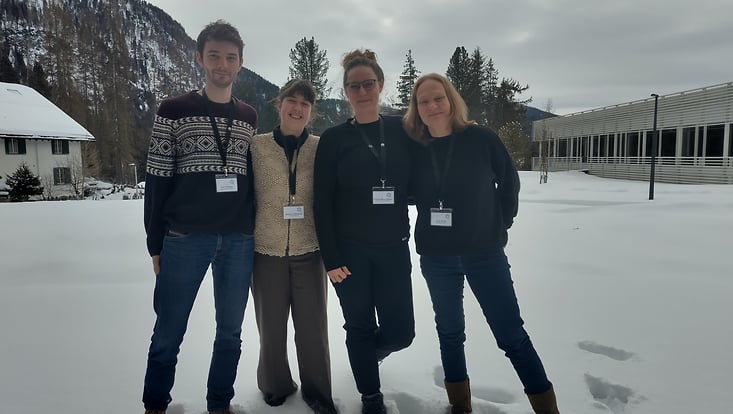Which complex parameter interactions influence the methane balance in the Arctic tundra?Summer-autumn expedition to Greenland started in mid-August
18 September 2024

Photo: UHH/C.Steffens
Following the successful winter and spring expedition, researchers from the MOMENT project have now traveled to Disko Island in Greenland for the second time this year in late summer and early autumn to map all four seasons in their research. The focus of their work is on analyzing the complex control mechanisms of the fluxes of the powerful greenhouse gas methane in heterogeneous permafrost landscapes.
The thawing permafrost releases methane (CH4), a potent greenhouse gas with a global warming potential of up to 28 times above that of CO2. However, depending on the soil properties, a smaller or larger proportion of CH4 is oxidized in the soil, i.e. converted to CO2. The MOMENT project aims to find out how different variables influence this proportion and how much CH4 ultimately leaves the Arctic soil in Blæsedalen.
MOMENT researchers traveled to Disko Island in August and September. They want to find out at which soil depths CH4 and N2O are produced or taken up and which parameters, e.g. soil moisture and temperature, nutrient availability, substrate type and vegetation cover, influence the level of greenhouse gas fluxes and the CH4 oxidation rate. To this end, Claudia Fiencke and Carolina Voigt from the University of Hamburg measured the greenhouse gases CO2, CH4 and nitrous oxide (N2O) in situ on the soil surface and at different soil depths. Voigt will incubate soil samples from different soil depths and different locations in climate chambers under controlled humidity and temperature conditions with and without the addition of nutrient solutions and record the greenhouse gas fluxes and the CH4 oxidation rate. Fiencke will extract the water-soluble, i.e. readily available, nitrogen from soil samples. Jan Melchert and André Faust from the University of Cologne collected the carbon from the CH4 emitting from the soil surface on zeolite cartridges. With the help of radiocarbon dating, they want to find out at what depth the CH4 was formed.
Last year, Tino Peplau and Torben Haase from Leibniz Universität Hannover installed sensors in the soil that continuously recorded soil moisture, soil temperature and redox potential. The values are stored on loggers, which they read out. In September, the soil reaches its maximum thawing depth before winter returns. Using ground penetrating radar, Peplau and Haase determined this maximum thawing depth in the area and will then display the results on a map. With the help of all this recorded and measured data, it will be possible to estimate current annual methane fluxes in the study area and, in the best-case scenario, the development of the methane balance under various future scenarios.






